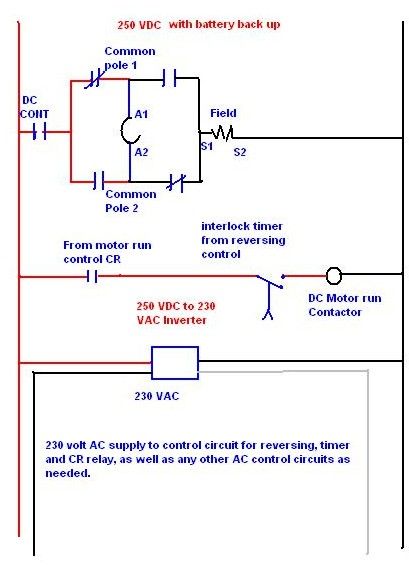hurk27
Senior Member
- Location
- Portage, Indiana NEC: 2008
Thanks for your help.
The DC supply is from a rectifier. Two 2-pole contactors are needed to directly change the polarity for reversing.
For the main poles of NEMA or IEC contactor, switching 250VDC is not a big deal, we can connect 3 or 4 poles in series to improve the ability. But it is really hard to find a coil rated 250VDC. Maybe nowadays it is not common in use, but only for some special applications like mining or railway.
You might be supprised to find that there are allot of industrys that still use 250 volt DC, many cranes are DC while most newer ones are run with drives, many older plants still rely on contactor control, the link I posted in my earlier post EC&M has the double interlocked two pole DC relays, but you order 4 singles with two pole kits (in your case NEMA size 2), the coils for a two pole configuration is 120 volts and are wired in series so if one fails both drop out, but they are quite pricy.
Click on this link: EC&M DC controls click on the 7004 PDF catalog to get the prices
Last edited:

